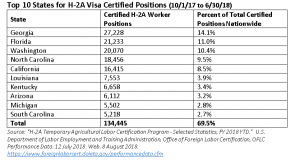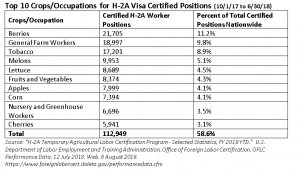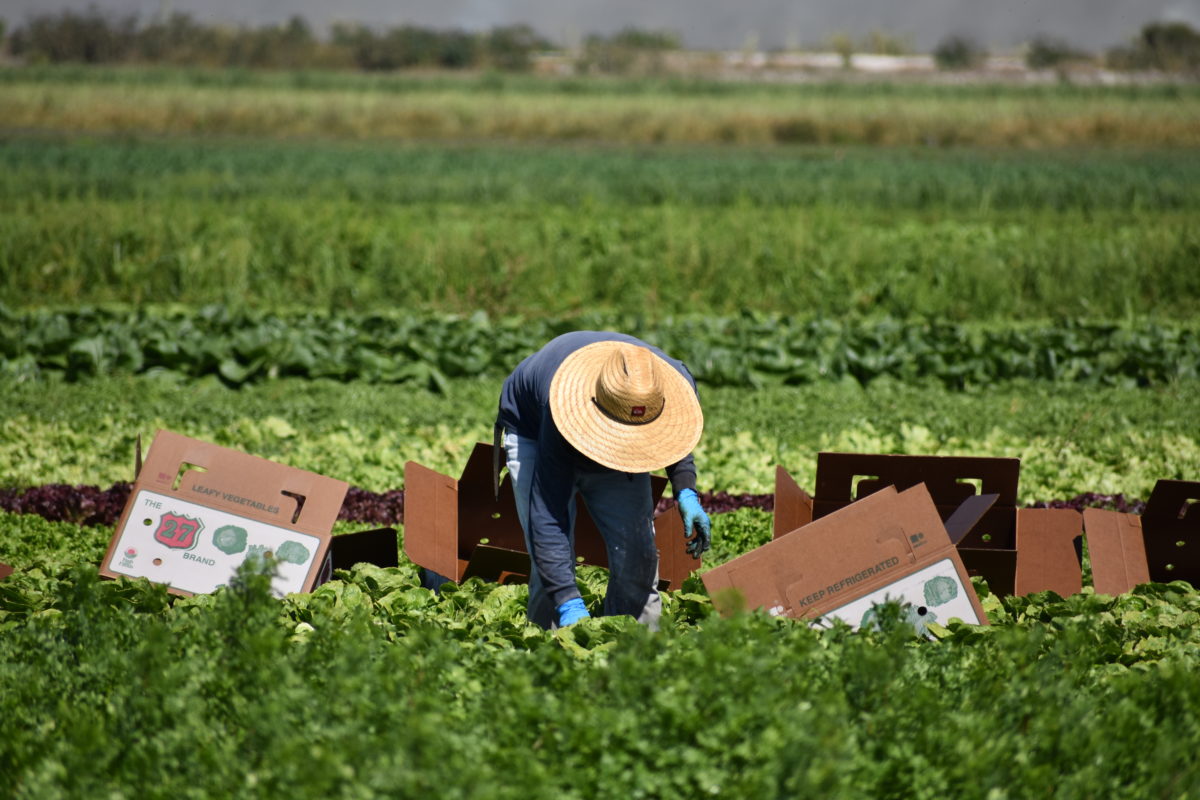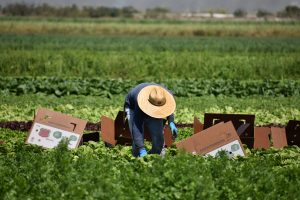Not a day goes by when discussions don’t swirl in the mainstream and social media spheres about immigration. The topic is polarizing at best. In agriculture, the need for a thoughtful, balanced solution is essential to ensure our ability to continue feeding the world. Notable to our industry is the proposal to modify the current agricultural guestworker program. As such, it is important to understand how extensively the program is used, what the most common challenges growers have using the program successfully, and what this means for a new program in the future.
The Immigration Reform and Control Act of 1986 created the H-2A visa category for temporary agricultural workers. Employers in the United States have often faced a shortage of available domestic workers who are able, willing and qualified to fill seasonal agricultural jobs. According to the U.S. Department of Homeland Security, the H-2A program was instituted to meet this need for seasonal and temporary labor, without adding permanent residents to the population. The program is overseen by three different federal agencies: the U.S. Citizen and Immigration Services, the U.S. Department of State and the U.S. Department of Labor.
 H-2A USE INCREASING
H-2A USE INCREASING
Given that multiple agencies have enforcement jurisdiction, it comes as no surprise that the program itself includes a litany of steps for participation and successful use. As a result, since its inception, the H-2A visa category has been leveraged to varying degrees across the country, with some states’ growers participating much more frequently than others.
According to the U.S. Department of Labor, Office of Foreign Labor Certification, from October 1, 2017 to June 30, 2018 (the most current data available), 10,320 H-2A visa applications have been received for a total of 200,363 workers. This is a 16 percent increase from the same time frame the previous year.
 REGULATION VIOLATIONS
REGULATION VIOLATIONS
While usage of the program is on the rise to date this fiscal year, growers continue to be challenged with varying aspects of the program. According to the U.S. Department of Labor, Wage and Hour Division, the two most egregious citations against growers in violation of the regulations relative to the H-2A visa program are:
- Rejection of U.S. workers – not hiring a domestic worker who is able, willing and qualified to work on an H-2A job opportunity
- Giving preferential treatment to foreign workers – providing higher wages, more hours, better working conditions or housing to foreign workers than U.S. workers in corresponding employment
In addition, other common violations include:
- Not paying the highest applicable wage
- Not paying for all hours worked
- Employee housing is not maintained in a safe and sanitary condition
- Not providing adequate cooking facilities
- Using an unlicensed driver to transport workers
- Using an unsafe vehicle to transport workers
- Not fully reimbursing workers the cost to obtain the H-2A visa, including but not limited to inbound and outbound travel and subsistence
Despite the challenges the program presents, to date it is our industry’s only viable and legal option for obtaining temporary labor. As of press time, the House of Representatives was slated to consider yet another iteration of immigration reform, this time in the form of HR 6417, the Ag and Legal Workforce Act, sponsored by House Judiciary Committee Chairman Goodlatte (R-VA). This bill was designed to revamp the H2 visa programs in their entirety, creating an H-2C visa program. By now, whether the bill was passed or not is likely known, but one thing is certain: The road to creating a workable solution that meets the needs of our evolving industry and workforce is a long one, paved with good intentions but not without potholes.
Amy Wolfe is president and CEO of AgSafe, headquartered in Modesto, California
This article was featured in the October issue of VSCNews magazine. To receive future issues of VSCNews magazine, click here.
Share this Post











